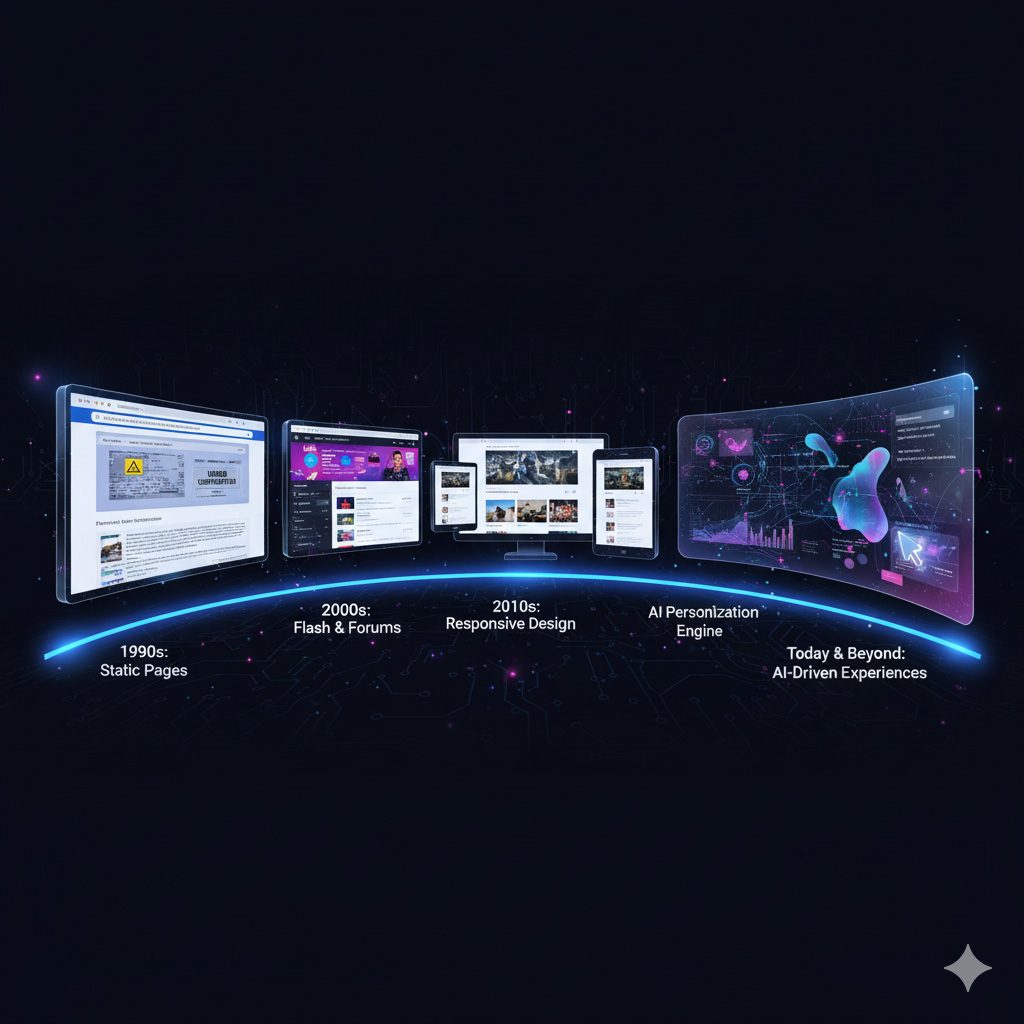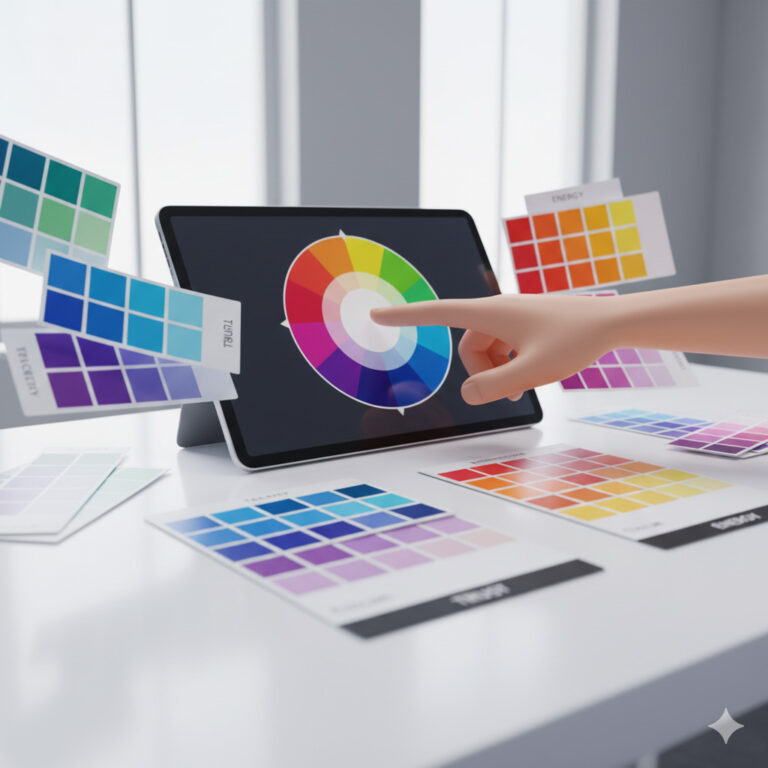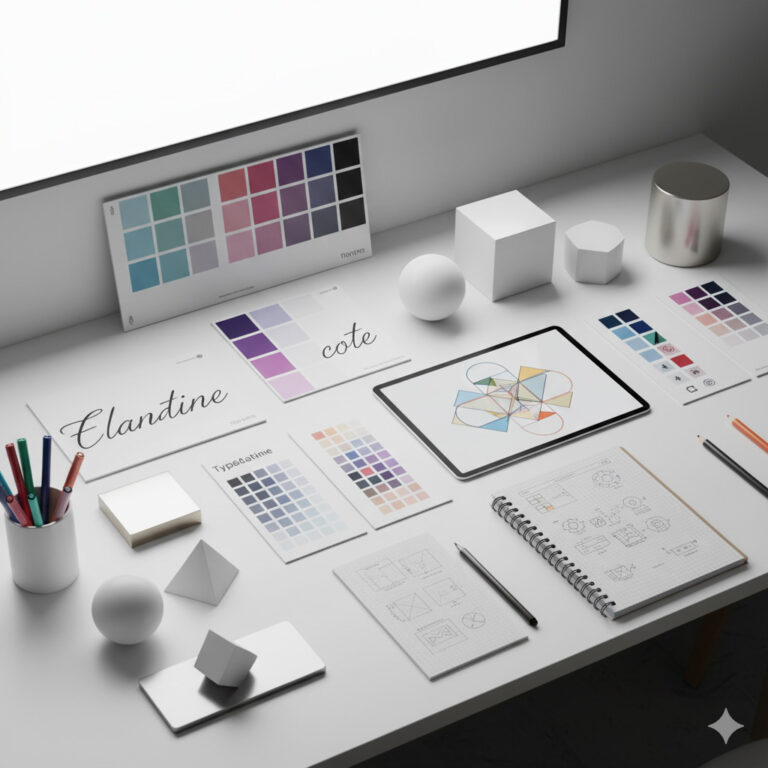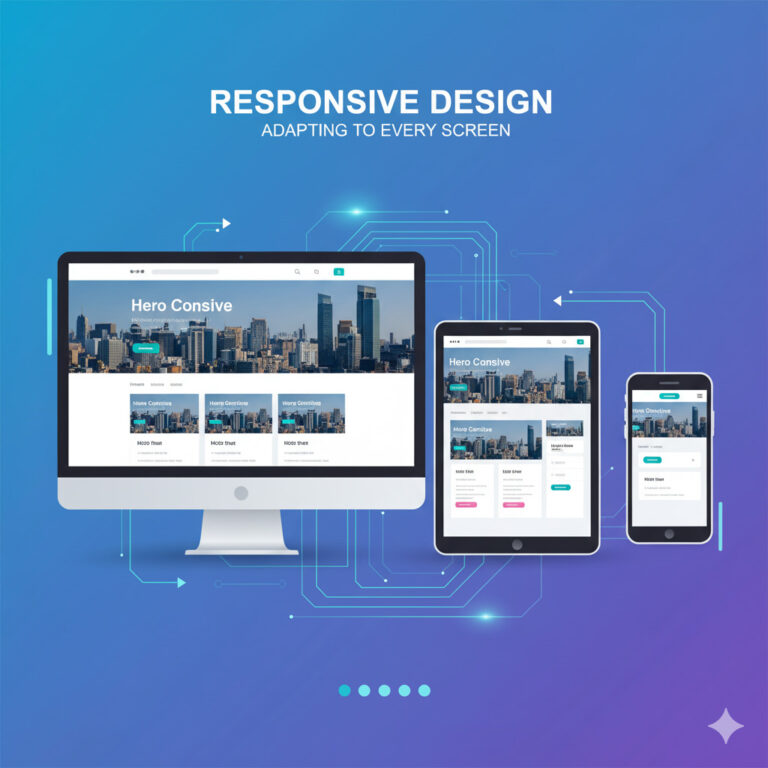The Evolution of Web Design: From Static Pages to Dynamic Experiences
Once upon a time, websites were nothing more than digital brochures — plain text, a few images, and hyperlinks. Fast forward to 2025, and websites have become living digital experiences: interactive, intelligent, and user-driven.
At Sammyk Graphix, we’ve seen this transformation firsthand. From hand-coded HTML to WordPress and AI-driven builders, web design has evolved into an art form that merges creativity, psychology, and technology.
In this post, we’ll take a journey through the timeline of web design evolution, explore modern trends, and uncover what the future of digital experiences holds.
1️⃣ The Early Days — The Static Web (1990–1999)
The internet’s first era, often called Web 1.0, was static and text-heavy.
Characteristics of Early Web Design:
- Plain HTML pages
- No CSS or styling
- Limited interactivity
- Centered layouts and blue hyperlinks
- Slow loading times
These early websites were informational, not interactive. Designers focused on functionality over aesthetics.
Example: The first version of Yahoo! (1994) was a text-based directory with minimal design — but it changed how we accessed information.
2️⃣ The Rise of Style and Structure — The CSS Era (2000–2009)
The 2000s marked a turning point with Cascading Style Sheets (CSS). Designers could finally separate content from presentation.
What Changed:
- Use of colors, backgrounds, and borders
- Introduction of navigation bars
- Tables replaced by layouts
- Flash animations and intros became popular
- Emergence of early CMS platforms
Trend Highlight: Websites became visual, but often heavy — remember those long Flash intros with “Skip Intro” buttons?
This era introduced graphic design principles to web development — setting the stage for modern design thinking.
3️⃣ The Birth of User Experience (2010–2015)
The next evolution focused on user experience (UX) — making websites not just look good, but feel intuitive.
Key Innovations:
- Responsive design for mobile devices
- Grid-based layouts and minimalism
- Rise of WordPress as a mainstream CMS
- Introduction of UX/UI design as disciplines
- Integration of social media and analytics
Design became data-informed. Instead of guessing what users liked, designers could now measure it.
Example: Apple’s clean white-space-driven design language influenced the entire digital world.
4️⃣ The Age of Interactivity — Web 2.0 (2016–2020)
This was the era of engagement and interaction.
Defining Features:
- Dynamic animations and micro-interactions
- Parallax scrolling and layered effects
- Video backgrounds and storytelling websites
- Integration of chatbots and live support
- Rise of one-page and portfolio websites
Users expected personal experiences, not static content.
Designers began merging storytelling with technology — creating emotional digital journeys.
Pro Tip: Story-driven websites improve user engagement and dwell time by over 60%.
5️⃣ The Modern Era — Experience Design (2021–2025)
Today, we’re in the age of experience design, where functionality, emotion, and technology unite.
At Sammyk Graphix, we design not just websites — but digital experiences that engage, inform, and convert.
Modern Web Design Characteristics:
- AI integration for personalization
- 3D design and immersive visuals
- Dark mode and adaptive interfaces
- Voice search optimization
- Minimalist aesthetics with bold typography
- Accessibility-first design
Modern design focuses on emotion and usability — every interaction should feel human, intuitive, and meaningful.
6️⃣ The Role of WordPress in the Evolution of Web Design
No platform has influenced web design more than WordPress.
From a humble blogging tool in 2003, it’s now the most powerful CMS powering over 43% of all websites worldwide.
Why WordPress Changed Everything:
- Easy drag-and-drop builders (like Elementor & Kadence)
- Endless plugin ecosystem
- SEO-friendly architecture
- Full customization and scalability
- No coding required for basic setup
Pro Tip: At Sammyk Graphix, we use WordPress and Kadence to build fast, secure, mobile-optimized sites that reflect each brand’s unique identity.
7️⃣ Visual Design Trends That Shaped the Web
Each design era had its own defining styles. Let’s look at the trends that shaped the web visually:
| Era | Design Trend | Impact |
|---|---|---|
| 2000s | Flash animation | Introduced movement & storytelling |
| 2010s | Flat design | Simplified visuals for usability |
| 2020s | Neumorphism & Glassmorphism | Modern, soft 3D effects |
| 2023–2025 | AI-generated design | Personalized & adaptive visuals |
Today’s websites blend flat simplicity with dynamic depth, creating balanced, emotionally engaging interfaces.
8️⃣ UX/UI — The Backbone of Modern Web Design
Modern web design isn’t just about visuals — it’s about experience.
Key Principles of UX/UI:
- Simplicity: Less clutter, more clarity
- Consistency: Familiar navigation and layouts
- Accessibility: Inclusive for all users
- Feedback: Visual responses (hover, clicks, animations)
- Emotion: Design that connects with feeling
Example: Netflix’s interface is designed for one thing — easy, fast, and personalized browsing. That’s UX done right.
9️⃣ The Future — AI, AR, and Beyond
The future of web design is intelligent, immersive, and predictive.
🔮 What’s Next:
- AI-Powered Design Systems: Tools like ChatGPT, Framer AI, and Uizard generating layouts automatically.
- Augmented Reality (AR): Interactive product previews and 3D visuals.
- Voice Interfaces: Websites that respond to spoken commands.
- Adaptive Personalization: Sites adjusting based on user mood or behavior.
- Sustainability-Focused Design: Eco-friendly hosting and low-energy interfaces.
Pro Tip: In the coming years, web design will merge with human-centered AI, focusing on empathy-driven digital experiences.
🔟 The Designer’s Role in the Future
As technology advances, one truth remains — human creativity drives connection.
AI can design, but it can’t feel. The designer’s role evolves from coder to creative strategist, combining:
- Psychology
- Storytelling
- Visual design
- Data and empathy
At Sammyk Graphix, we embrace the future — blending AI tools with creative intelligence to deliver next-generation digital experiences.
Web design’s evolution is a story of creativity, innovation, and empathy. From static pages to immersive experiences, the web has become our world’s most powerful storytelling platform.
At SammyK Graphix, we don’t just build websites — we build experiences that move, inspire, and convert.
Ready to evolve your digital presence?
Work with SammyK Graphix — where creativity meets modern web technology.







